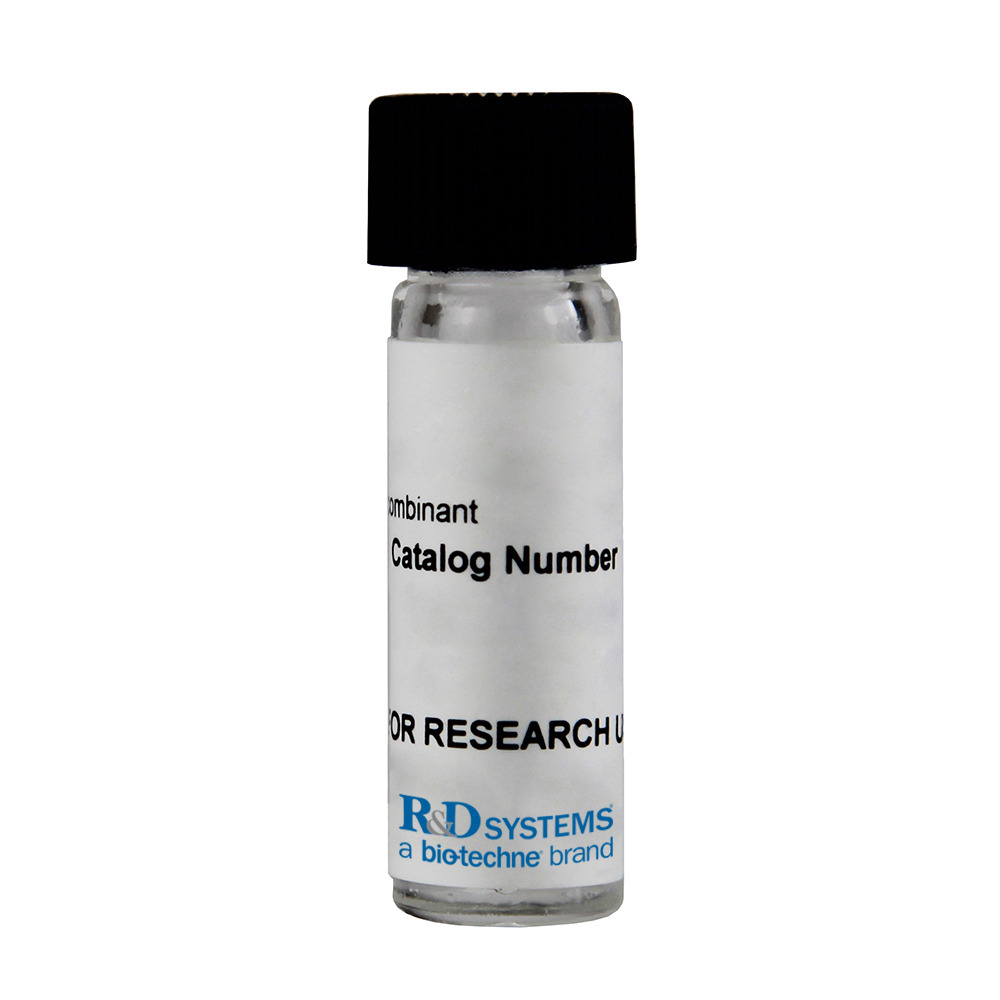Recombinant Human His6-UBE2R1/CDC34 Protein, CF
R&D Systems, part of Bio-Techne | Catalog # E2-610


Key Product Details
Product Specifications
Source
Contains an N-terminal Met and 6-His tag
Purity
Predicted Molecular Mass
Activity
Formulation, Preparation and Storage
E2-610
| Formulation | X mg/ml (μM) in 50 mM HEPES pH 7.5, 200 mM NaCl, 1 mM TCEP, 10% Glycerol (v/v) |
| Shipping | The product is shipped with dry ice or equivalent. Upon receipt, store it immediately at the temperature recommended below. |
| Stability & Storage | Use a manual defrost freezer and avoid repeated freeze-thaw cycles.
|
Background: UBE2R1/CDC34
Ubiquitin-conjugating Enzyme H3 (UbcH3), also known as Cell Division Cycle 34 (Cdc34), is a member of the Ubiquitin-conjugating (E2) enzyme family (1). UbcH3 has a predicted molecular weight of 26 kDa. The human protein shares 98% amino acid (aa) sequence identity with the mouse and rat orthologs. In addition to an E2 catalytic core domain, UbcH3 has two Ubiquitin binding sites, UBS1, from aa 205-215, and UBS2, from aa 216-225, and a C-terminal acidic tail domain (2,3). UbcH3 is required for efficient cell cycle progression in human cells (4). UbcH3 interacts with the SCF(Fbw7) and SCF(Skp2) Ubiquitin ligases (E3s) to target the key cell cycle proteins Myc and p27/Kip1, respectively, for ubiquitination and degradation (4,5). Furthermore, CK2 has been shown to phosphorylate human UbcH3 on Ser203, Ser222, and Ser231 in cycling cells (6). The proliferation of cancer cell lines is inhibited following treatment with a human UbcH3 inhibitor, suggesting that UbcH3 also plays a significant role in cancer (7). This protein has an N-terminal His6-tag.
References
- Plon, S.E. et al. (1993) Proc. Natl. Acad. Sci. USA 90:10484.
- Choi, Y.S. et al. (2010) J. Biol. Chem. 285:17754.
- Block, K. et al. (2005) Cell Cycle 4:1421.
- Butz, N. et al. (2005) Exp. Cell Res. 303:482.
- Popov, N. et al. (2010) Nat. Cell Biol. 12:973.
- Sadowski, M. et al. (2007) Biochem. J. 405:569.
- Ceccarelli, D.F. et al. (2011) Cell 145:1075.
Alternate Names
Gene Symbol
UniProt
Additional UBE2R1/CDC34 Products
Product Documents for Recombinant Human His6-UBE2R1/CDC34 Protein, CF
Product Specific Notices for Recombinant Human His6-UBE2R1/CDC34 Protein, CF
For research use only